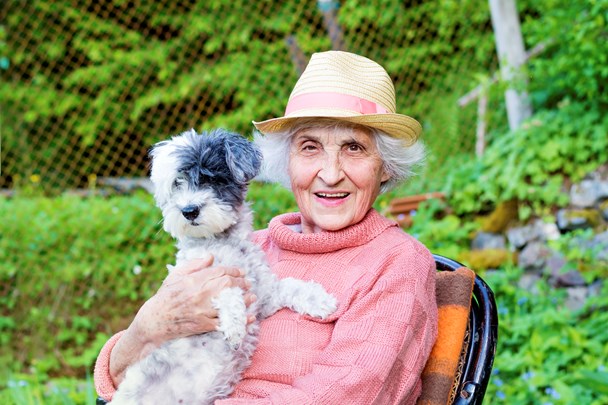
The First Therapy Dog
Dogs have proven to be great at many things, but did you know they have become important for therapy work as well? Hundreds of hardworking dogs are in the United States, which is only increasing. These dogs help just as many people with various illnesses and disabilities, as well as simply visit and bring comfort and a smile to patients or anyone in need. In this article, we explore what exactly therapy is, what a therapy dog does, and who is considered the first therapy dog.
What is Therapy?
‘Therapy’ is a single word with many definitions and connects to many branches of medical fields. Yet, overall many people attend therapy in the hopes that a healthcare professional can help them physically, emotionally, or mentally to get to a better place in life and with themselves. Did you know that dogs can help with therapy, too? They undergo special training to aid therapists in assisting patients or being assigned to help.
What is a Therapy Dog?
The terms ‘service dogs,’ ‘therapy dogs,’ and ‘emotional support animals’ are often confused. In simple summary, dogs that are considered service dogs work directly with people that have disabilities, like being blind, deaf, or those in wheelchairs. Emotional support animals must be prescribed by a mental health professional for a patient and are considered companion animals to help with issues like anxiety or depression, even loneliness. Therapy dogs are not trained for a specific person but for larger clinical settings, like hospitals, schools, or mental health institutions. They need to adapt to new places and to many different people.
Therapy dogs are specially trained canines that provide comfort, support, and affection to people other than their owners or handlers. These dogs can be assigned to a person with medical needs, visit people in healthcare establishments, or are even brought in after disasters to provide a calming presence to those in distress.
Not all dogs can become therapy dogs. To be good at this job, a dog must be obedient, friendly, patient, and calm in all situations. That is one reason why you are told never to touch or pet a therapy or service dog when they are working. They need to stay focused on the person they are with and helping. So be aware of when a dog has on a vest or anything indicating that they are “on the clock.” These dogs are essential!

The First Official Therapy Dog
The first dog to be officially recognized as a therapy dog is believed to be a Yorkshire Terrier named Smoky. Other dogs worked either with a person in the therapy field or were present for therapy sessions, but no solid evidence was kept as to whether they were used during sessions. Therefore, Smoky takes the title.
This dog not only ultimately helped as a therapy dog but was also a companion at a military base. According to Stanley Coren in his article “Who Was the First Therapy Dog,” he writes that,
“Smoky's origins are unknown. In 1944 she was discovered, full-grown, in an abandoned foxhole in the New Guinea jungle. Ultimately the soldier who was taking care of her found himself running out of money in a poker game, so he sold her to Corporal William Wynne, a photographer with the U.S. Air Force… For the next two years, Smoky would be carried in Wynne's backpack and would share his C rations. She would also accompany him on combat flights in the South Pacific. Ultimately she flew 12 air/sea rescue and photo reconnaissance missions with the Fifth Air Force (and was awarded eight battle stars for this). Smoky suffered through all of the rigors of combat endured by Corporal Wynne, including surviving around 150 air raids on New Guinea and making it through a typhoon on Okinawa.”
Wow!
She became a therapy dog when Wynne came down with dengue fever. She comforted her owner and the other patients with him at the hospital he was transported to. Her positive effect gained notice, and she was allowed to make rounds with the other patients officially. Other doctors and hospitals heard of this and eventually began to try with other dogs. The results were very positive. Since then, dogs have been helping people in the medical field for years.
Conclusion
Therapy dogs come in many shapes and sizes! They are specially trained to visit patients, bring comfort and joy, and help deal with illnesses. Therapy dogs are hardworking partners in the medical field and make significant differences in the lives of people they encounter daily! Recent great dogs that have contributed to work in therapy include Elsa the Pit Bull, Lexy the German Shepherd, Sparticus the Akita, and Xander the Pug. There are so many great dogs out there!
Want to know more about great dogs and all that they do? Check out one of our past blogs, "The History of Service Dogs.”
Also, as a dog registration organization, CKC does not provide testing, evaluation, or certification of therapy, emotional support, or service dogs. Several reputable organizations do provide testing for therapy dogs, including Alliance of Therapy Dogs (formerly Therapy Dogs Inc., https://www.therapydogs.com), Bright and Beautiful Therapy Dogs (https://golden-dogs.org/), Love on a Leash (https://www.loveonaleash.org/), Pet Partners (formerly Delta Society, https://petpartners.org/), and Therapy Dogs International (www.tdi-dog.org).











